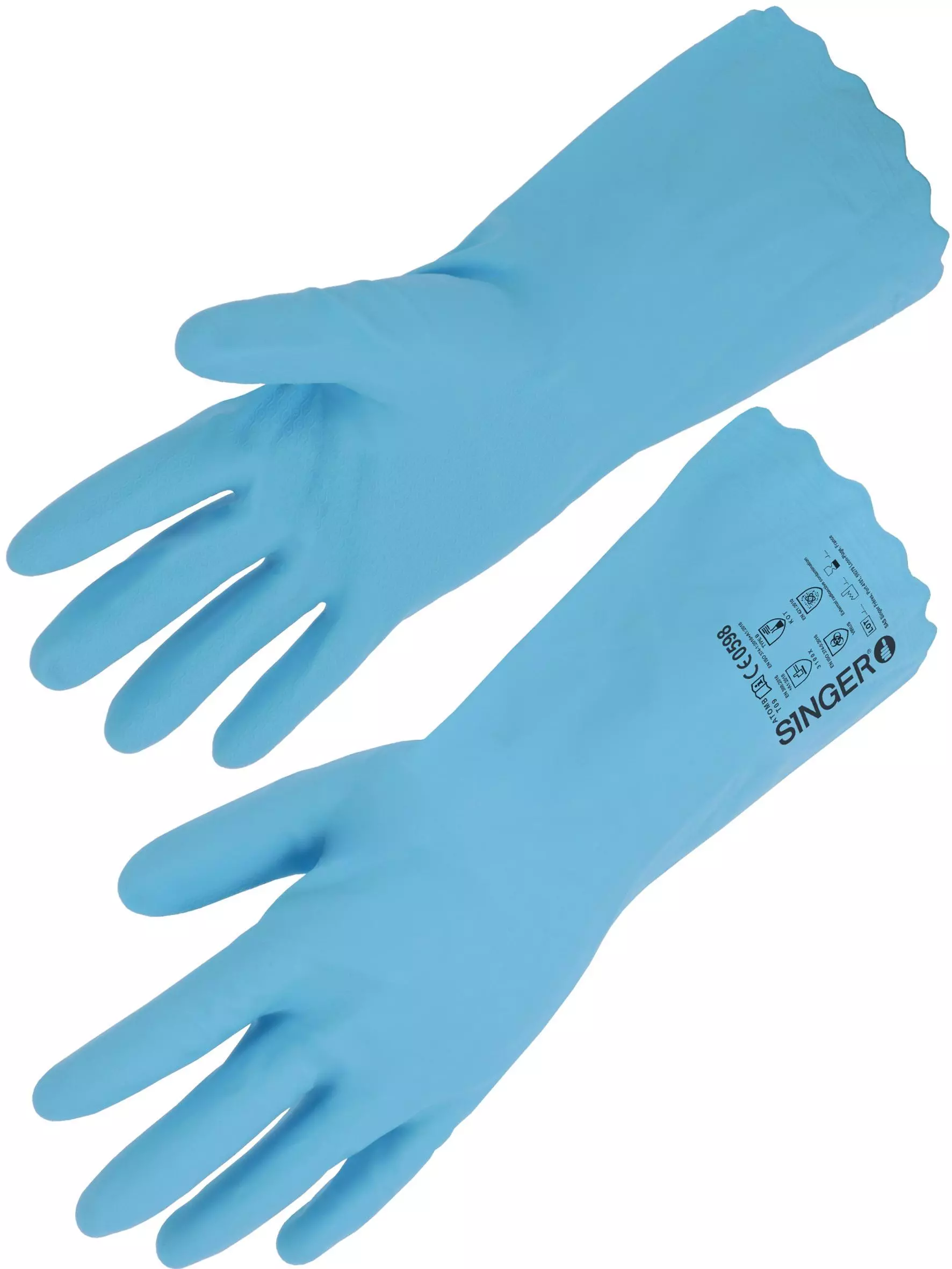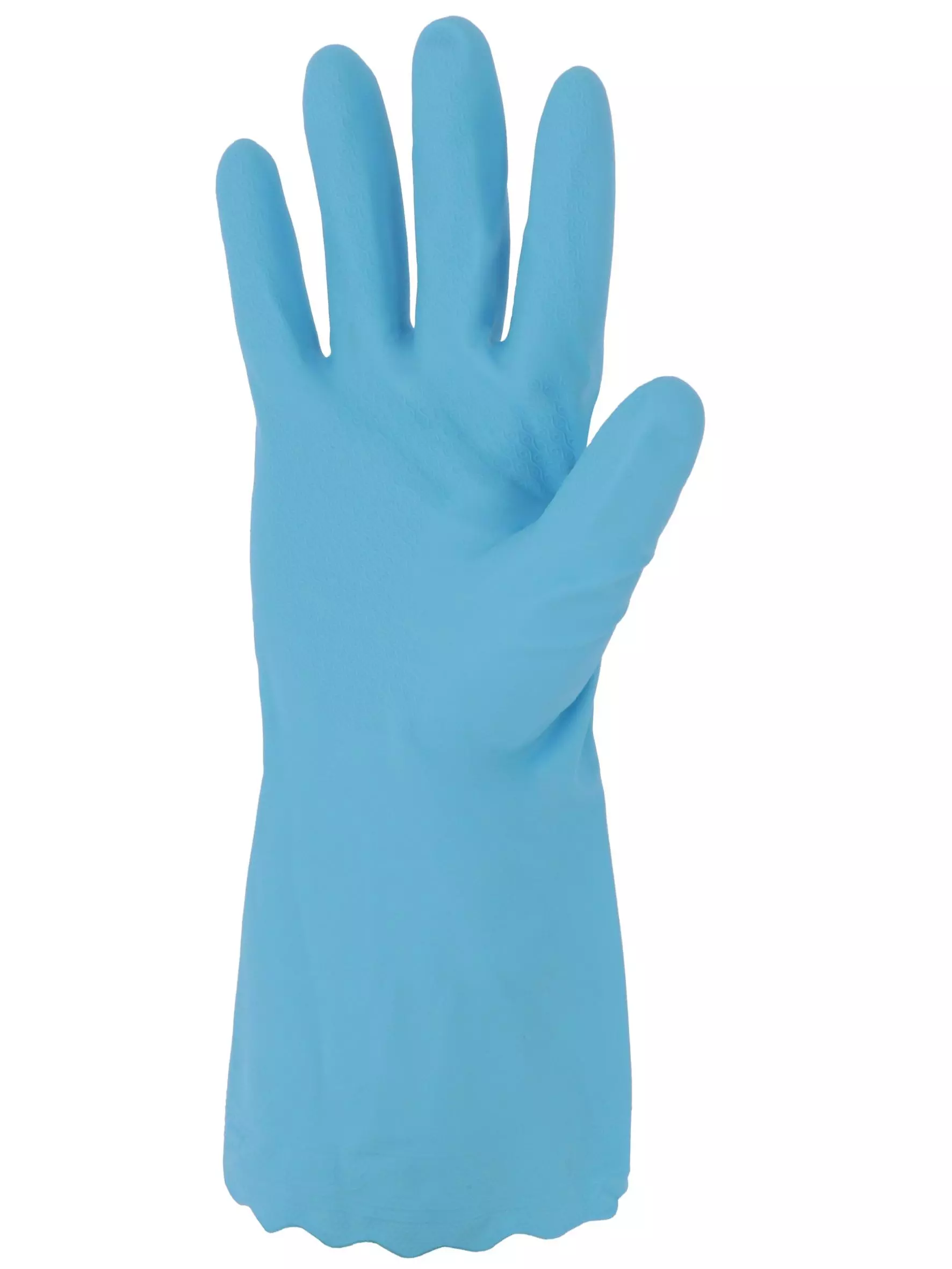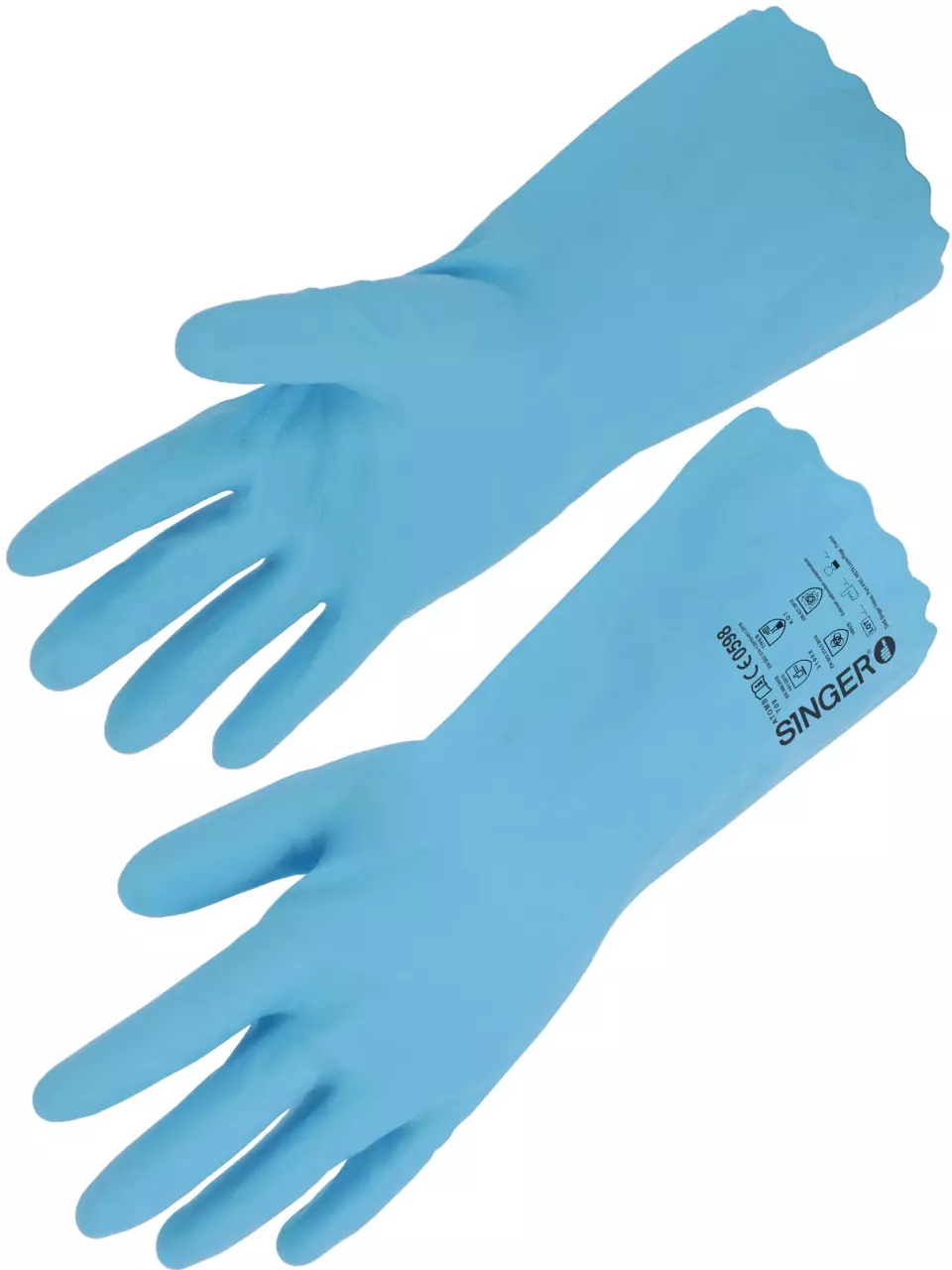


Features You'll Love

Cuff Style · Open
Determines how the glove secures around the wrist, affecting fit, protection from debris, and ease of putting gloves on and taking them off.

EN 388 · Tear Resistance Level 0, Puncture Resistance Level 0, Abrasion Resistance Level 3
Offers no rated protection against the material tearing apart.
Offers no protection against puncture hazards.
Provides good resistance against scraping, scratching, and rubbing on rough or abrasive surfaces.
Singer Safety
Chemical Resistant Gloves, Blue, 10 pairs
Chemical Resistant Gloves, Blue, 10 pairs
4.9 / 5
43,47 €
Price per 10 pairs
4,35 € / pair
Choose size
Shipping fee is 7,95 € for orders under 80,00 €
Features You'll Love

Cuff Style · Open
Determines how the glove secures around the wrist, affecting fit, protection from debris, and ease of putting gloves on and taking them off.

EN 388 · Tear Resistance Level 0, Puncture Resistance Level 0, Abrasion Resistance Level 3
Offers no rated protection against the material tearing apart.
Offers no protection against puncture hazards.
Provides good resistance against scraping, scratching, and rubbing on rough or abrasive surfaces.
Product description
The ATOMB protective gloves provide comprehensive chemical and mechanical protection for demanding industrial environments. These unsupported PVC gloves feature cotton flock-lining for moisture absorption and comfort, with a specialized "wave" pattern on the palm for enhanced grip. Certified to multiple safety standards including EN 388, EN ISO 374-1 Type B, EN ISO 374-5 with virus protection, and EN 421 for radioactive contamination protection, these gloves offer reliable protection across various hazardous applications.
Product Features:
- Unsupported construction for high flexibility and dexterity
- Cotton flock-lining for perspiration absorption and comfort
- Zigzag edge wrist design for secure fit
- Extended length for splash protection
- "Wave" pattern palm finish for improved grip
- Fully coated PVC (vinyl) construction for excellent chemical resistance
Technical Details:
- Type B chemical protection against potassium hydroxide (K), ammonia (O), and formaldehyde (T)
- Mechanical protection rating: EN 388 3100X
- Virus and microorganism protection (EN ISO 374-5)
- External radioactive contamination protection (EN 421)
- Category III PPE under European Regulation (EU) 2016/425
Recommended Applications:
- Chemical industry
- Heavy industry
- Light industry
- Agriculture
- Maintenance
Standards:
- EN 388: 2016 + A1: 2018 (3100X)
- EN ISO 374-1: 2016 + A1: 2018 Type B (KOT)
- EN ISO 374-5: 2016 VIRUS
- EN 421: 2010 (External radioactive contamination)
- ISO 9001 / ISO 14001 certified production
EAN: 3660514244146, 3660514244153, 3660514244177, 3660514244184, 3660514244207, 3660514244214, 3660514244238, 3660514244245, 3660514246706, 3660514246713